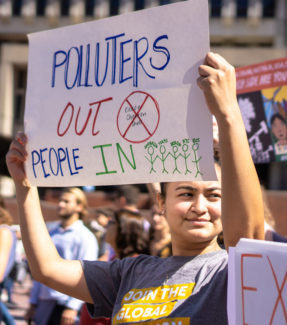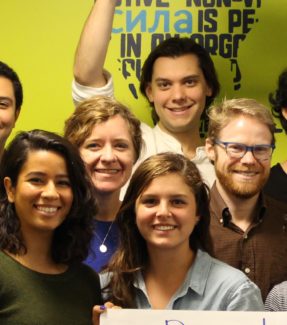This release was issued by the Southeast Asia Tobacco Control Alliance (SEACTA). Read Corporate Accountability’s response here.
Bangkok, 15 July 2019: The Southeast Asia Tobacco Control Alliance (SEATCA) has accused the Foundation for a Smoke-free World (FSFW) funded by Philip Morris International (PMI) of hijacking its Smoke-free Index, first published in 2016 in support of the World Health Organization Framework Convention on Tobacco Control (WHO FCTC).
SEATCA developed its Smoke-Free Index to assess implementation of smoke-free policies in all ASEAN countries in line with the WHO FCTC. First published in 2016, the Smoke-Free Index was updated in 2017, and another update will be released in 2019. It is part of SEATCA’s suite of tobacco control indices: Tobacco Industry Interference Index, Tobacco Tax Index, Packaging and Labeling Index, and Tobacco Advertising, Promotion and Sponsorship Index.
The FSFW is funded solely by PMI, which established it in 2017 with a pledge of US$ 960 million ($80 million annually for 12 years) as part of the company’s “smoke-free future”. Both PMI and FSFW have hijacked the globally accepted use of the term “smoke-free” and delimited it to mean “cigarette-free,” referring to PMI’s heated tobacco products (HTPs) and electronic nicotine delivery systems (ENDS), often referred to as e-cigarettes. These new products are promoted as supposedly safer alternatives to traditional cigarettes, reminiscent of cigarette filters[1] and “light” or “low tar” cigarettes[2] that were promoted by tobacco companies to give false reassurance to smokers that these reduced their risks of health harms.
In March 2019, the PMI-funded FSFW announced it had appointed a research company, Euromonitor, and a think tank, SustainAbility, to develop “the first ever Smoke-Free Index”,[3] which would evaluate actions of 15 tobacco companies to shift from conventional cigarettes to alternative “smoke-free” products. Two months earlier, in January 2019, FSFW filed a trademark application with the United States Patent and Trademark Office for ownership of the mark “[Smoke-Free Index]”. Similar trademark applications have also been filed in the EU, Switzerland, the United Kingdom, Australia, China, and Canada.
“Considering that SEATCA’s Smoke-Free Index was first published in 2016, FSFW’s use and trademarking of the term “Smoke-Free Index” is misleading, potentially confusing, and tantamount to wrongful appropriation of SEATCA’s intellectual property,” said Dr. Ulysses Dorotheo, Executive Director of SEATCA.
“Conveniently, these actions of FSFW address a PMI concern that was identified in a 2014 PMI Corporate Affairs presentation made public by a Reuters investigative report in 2017: “We’re still building ASEAN-wide counterweights to SEATCA, the major ATO [anti-tobacco organization] in Asia.”[4] With this copycat Smoke-Free Index, PMI is therefore able to hit two birds with one stone,” Dorotheo added.
News of the PMI-funded FSFW’s Smoke-Free Index has been met with skepticism by tobacco control campaigners and financial investors.[5] Very recently, government and civil society rejection has led to the cancellation of regional dialogues organized in Turkey and Thailand by SustainAbility intended to inform this copycat index. Given PMI’s aggressive promotion of its HTPs and ENDS, health advocates suspect that the report will be an annual PR gimmick to endorse PMI and its non-cigarette sales, even as PMI continues to aggressively and simultaneously promote conventional cigarettes.
According to WHO, ENDS produce aerosols composed of various gases and particles that ordinarily include “glycols, aldehydes, volatile organic compounds (VOCs), polycyclic aromatic hydrocarbon (PAHs), tobacco-specific nitrosamines (TSNAs), metals, silicate particles and other elements. Dicarbonyls (glyoxal, methylglyoxal, diacethyl) and hydroxycarbonyls (acetol) also are thought to be important compounds in the aerosol. Many of these substances are toxicants that have known health effects resulting in a range of significant pathological changes.”[6] Similarly, the WHO reiterates that all forms of tobacco use are harmful, including HTPs, because tobacco is inherently toxic and contains carcinogens even in its natural form.[7] A new study[8]published earlier this year showed HTPs, ENDS, and conventional cigarettes are all toxic to human lung cells.
Contact:
Wendell C Balderas, Media and Communications Manager – SEATCA
Email: [email protected] | Mobile: +63 999 881 2117 ##
Additional references:
- WHO FCTC Article 8 Guidelines: Protection from exposure to tobacco smoke –
https://www.who.int/fctc/treaty_instruments/adopted/Guidelines_Article_8_English.pdf - SEATCA Smoke-free Index, 2017 –
https://seatca.org/dmdocuments/Smoke-free_Index_2017.pdf - Old Tactic, New Disguise: PMI-funded Foundation for a Smoke-free World, 2018 –
https://seatca.org/dmdocuments/Fact%20Sheet%20FSFW%20June.pdf - Hijacked: SEATCA’s Smoke-Free Index (briefing paper) –
https://seatca.org/dmdocuments/SF%20Index%20Briefing%20Paper%209July.pdf - International public health community supports SEATCA’s Smoke-free Index and urges rejection of PMI-funded Foundation for a Smoke-Free World (FSFW) –
https://seatca.org/?p=14341
About SEATCA
SEATCA is a multi-sectoral non-governmental alliance promoting health and saving lives by assisting ASEAN countries to accelerate and effectively implement the evidence-based tobacco control measures contained in the WHO FCTC. Acknowledged by governments, academic institutions, and civil society for its advancement of tobacco control movements in Southeast Asia, the WHO bestowed on SEATCA the World No Tobacco Day Award in 2004 and the WHO Director-General’s Special Recognition Award in 2014.
_________________________________________________________
[1] Harris, B. 2011. The intractable cigarette ‘filter problem’. Tobacco Control 20:i10-i16. Available at: https://tobaccocontrol.bmj.com/content/20/Suppl_1/i10
[2] Leavell, N. 1999. The low tar lie. Tobacco Control 8:433-437. Available at:https://tobaccocontrol.bmj.com/content/8/4/433
[3] Foundation for a Smoke-Free World. Leading global research firms selected to create the first-ever smoke-free index, 18 March 2019. Available at:https://www.smokefreeworld.org/newsroom/leading-global-research-firms-selected-create-first-ever-smoke-free-index
[4] Philip Morris International. 2014 Corporate affairs approach and issues [slide presentation], excerpts contributed by Reuters News, Thomson Reuters, 12 July 2017. Available at: https://assets.documentcloud.org/documents/3892762/2014-Corporate-Affairs-Approach-and-Issues.pdf
[5] Milburn, E. (14 May 2019). Planned smoke-free index met with skepticism from campaigners and investors. Responsible Investor. Available at:https://www.responsible-investor.com/home/article/fsfw/
[6] World Health Organization. 2016. Electronic Nicotine Delivery Systems and Electronic Non-Nicotine Delivery Systems (ENDS/ENNDS): Report by WHO. Available at: https://www.who.int/fctc/cop/cop7/FCTC_COP_7_11_EN.pdf
[7] World Health Organization. 2018. Heated Tobacco Products (HTPs) Information Sheet, May 2018. Available at:https://apps.who.int/iris/bitstream/handle/10665/272875/WHO-NMH-PND-17.6-eng.pdf
[8] Sohal, S.S., Eapen, M.S, Naidu, V.G.M., and Sharma, P. IQOS exposure impairs human airway cell homeostasis: direct comparison with traditional cigarette and e-cigarette. ERJ Open Research, 2019; 5 (1): 00159-2018 DOI: 10.1183/23120541.00159-2018



